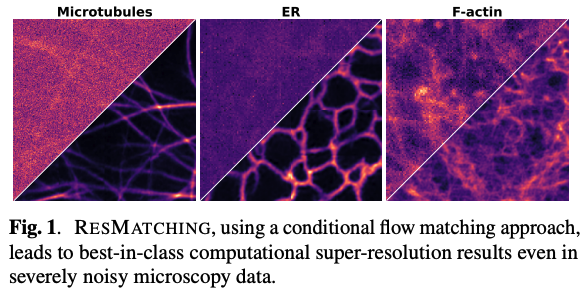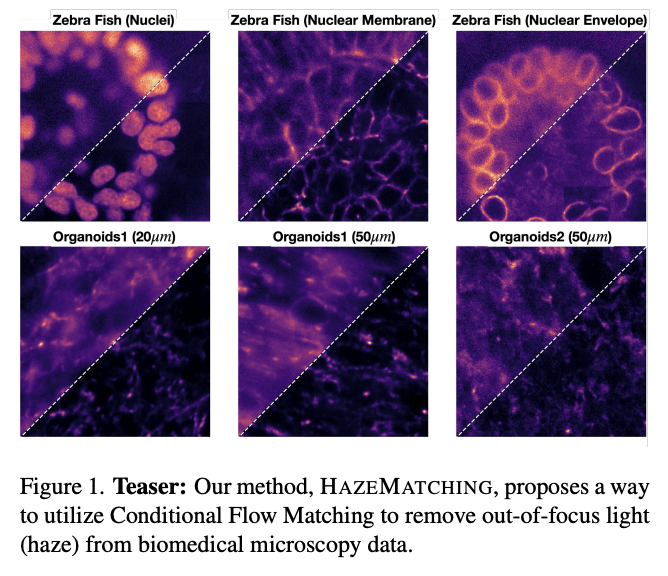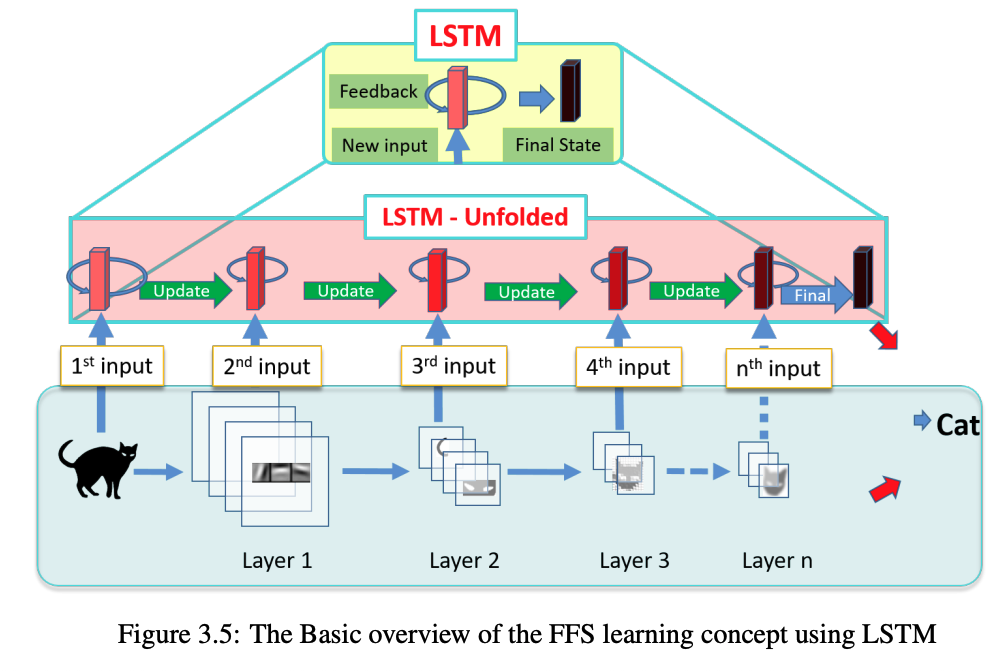Current Research (PhD, 2022–Present)
ResMatching: Noise-Resilient Computational Super-Resolution via Guided Conditional Flow Matching
Anirban Ray, Vera Galinova, and Florian Jug

A guided conditional flow-matching framework for noise-resilient computational super-resolution in fluorescence microscopy, unifying restoration, uncertainty estimation, and posterior sampling within a single generative model.
GitHub | Paper (arXiv) | Project Page
HazeMatching: Conditional Flow Matching for Microscopy Dehazing
Anirban Ray, Ashesh, and Florian Jug

A generative framework that restores optical microscopy images degraded by scattering and haze using Conditional Flow Matching (CFM). HazeMatching models the mapping between widefield and confocal modalities, enabling clearer visualization of biological structures.
GitHub | Paper (arXiv) | Project Page
Past Research (Hitachi Ltd., 2018–2021)
Deep Learning for Microscopy Image Analysis
From 2018 to 2021, my research at Hitachi Ltd., Tokyo focused on developing deep learning–based systems for high-precision image understanding in biomedical microscopy. I worked on combining computer vision and AI-driven automation for identifying and quantifying objects of interest in complex visual data.
Publications:
Patents:
- US Patent 12327363 — methods and apparatuses for generating neural models that identify and segment objects of interest from images.
- US Patent 12211213 — adaptive feature extraction and object detection for microscopy imaging.
- EP Patent 3961562A1 — AI image-processing systems for industrial and microscopy applications.
This phase of my work established a foundation in AI-driven visual understanding, bridging industrial automation with quantitative biological imaging, and set the stage for my later research in generative and flow-based models for microscopy restoration.
Past Research (Masters Thesis, 2016–2018)
Modeling the Feature Evolution in CNNs using LSTM

During my master’s studies at Nagoya Institute of Technology, Japan (2018), I explored the temporal dynamics of feature representations in Convolutional Neural Networks (CNNs) using Long Short-Term Memory (LSTM) networks. My research focused on understanding how features evolve across layers in CNNs and leveraging LSTMs to model these transitions for improved image classification performance. Read more about it in my thesis.



